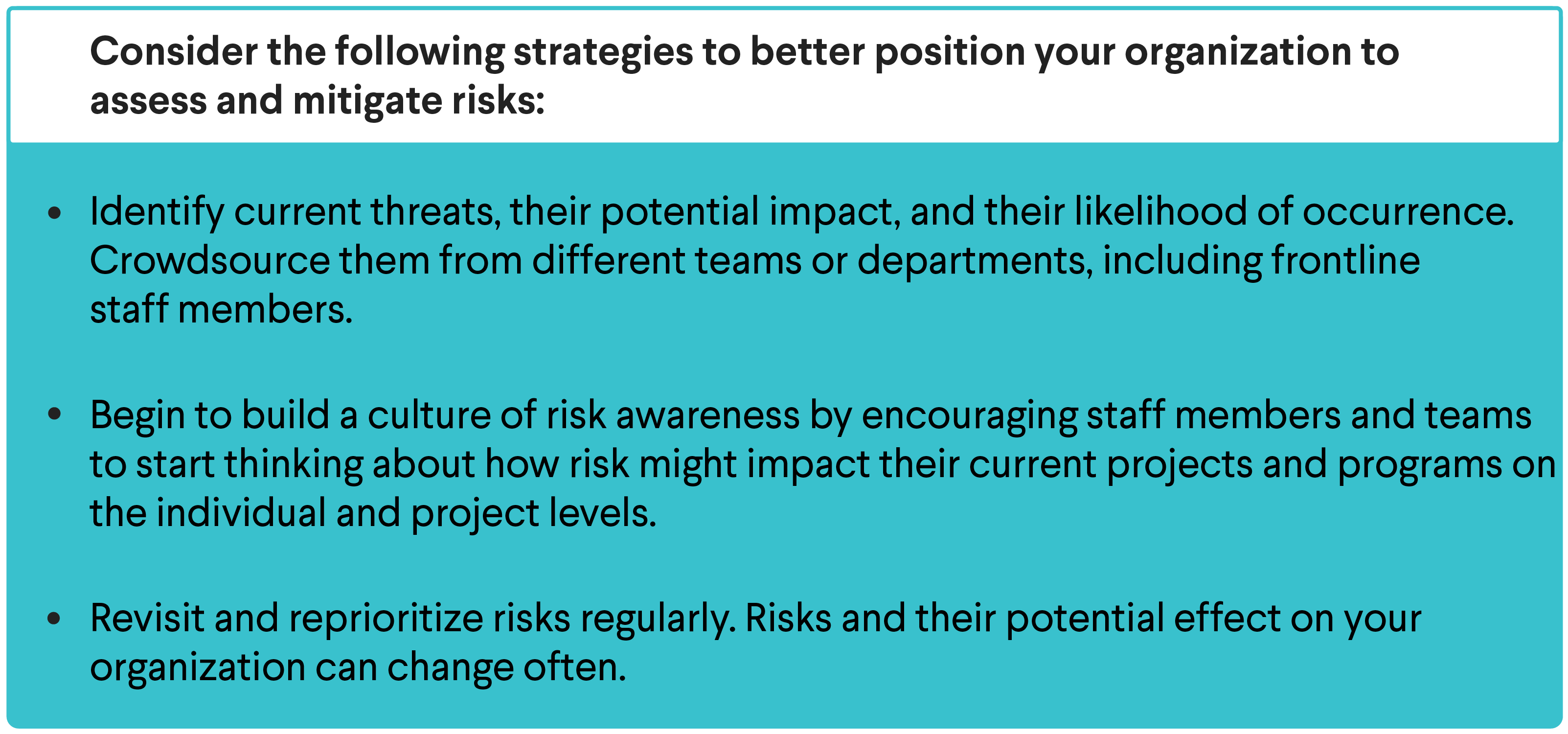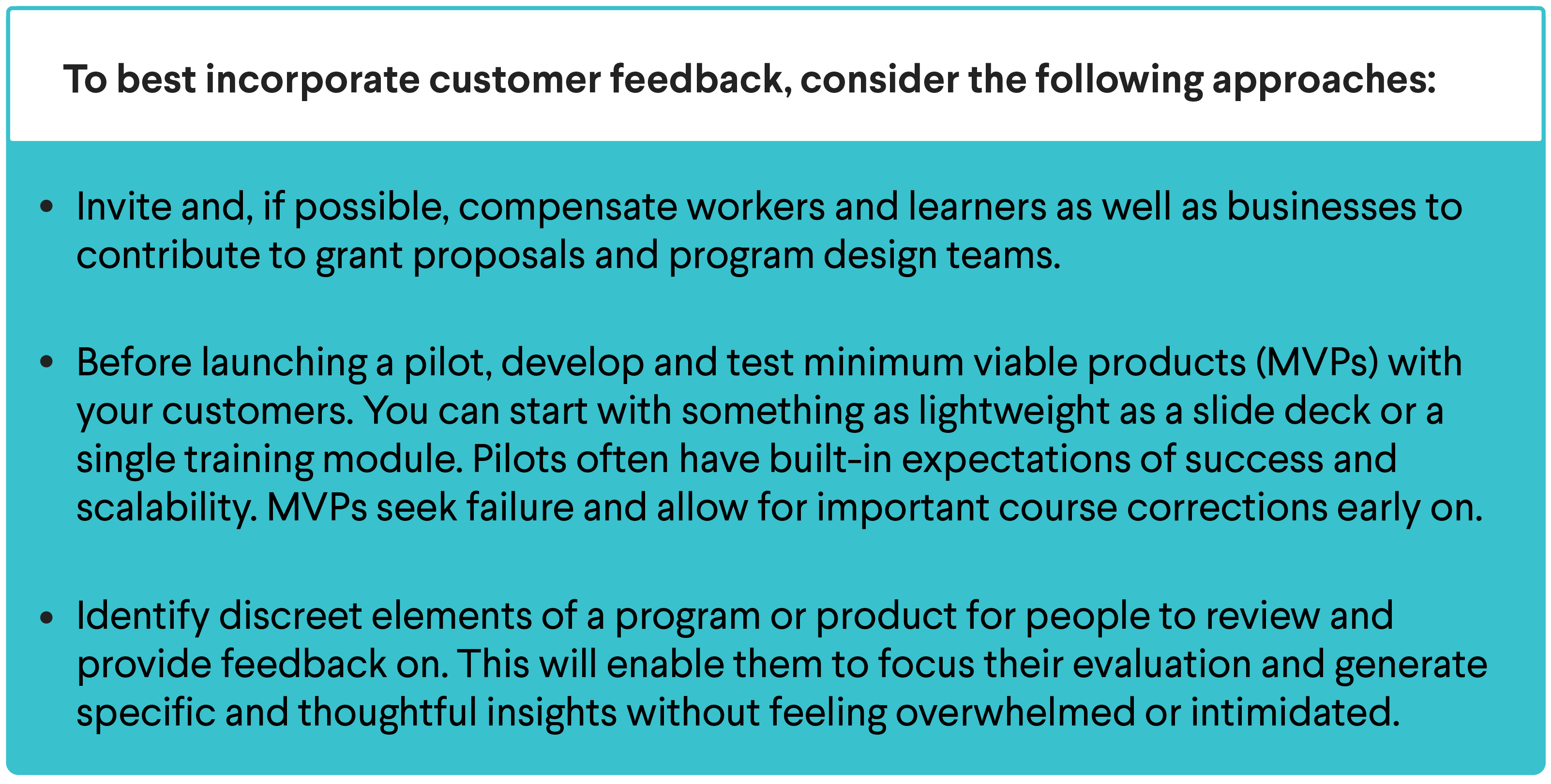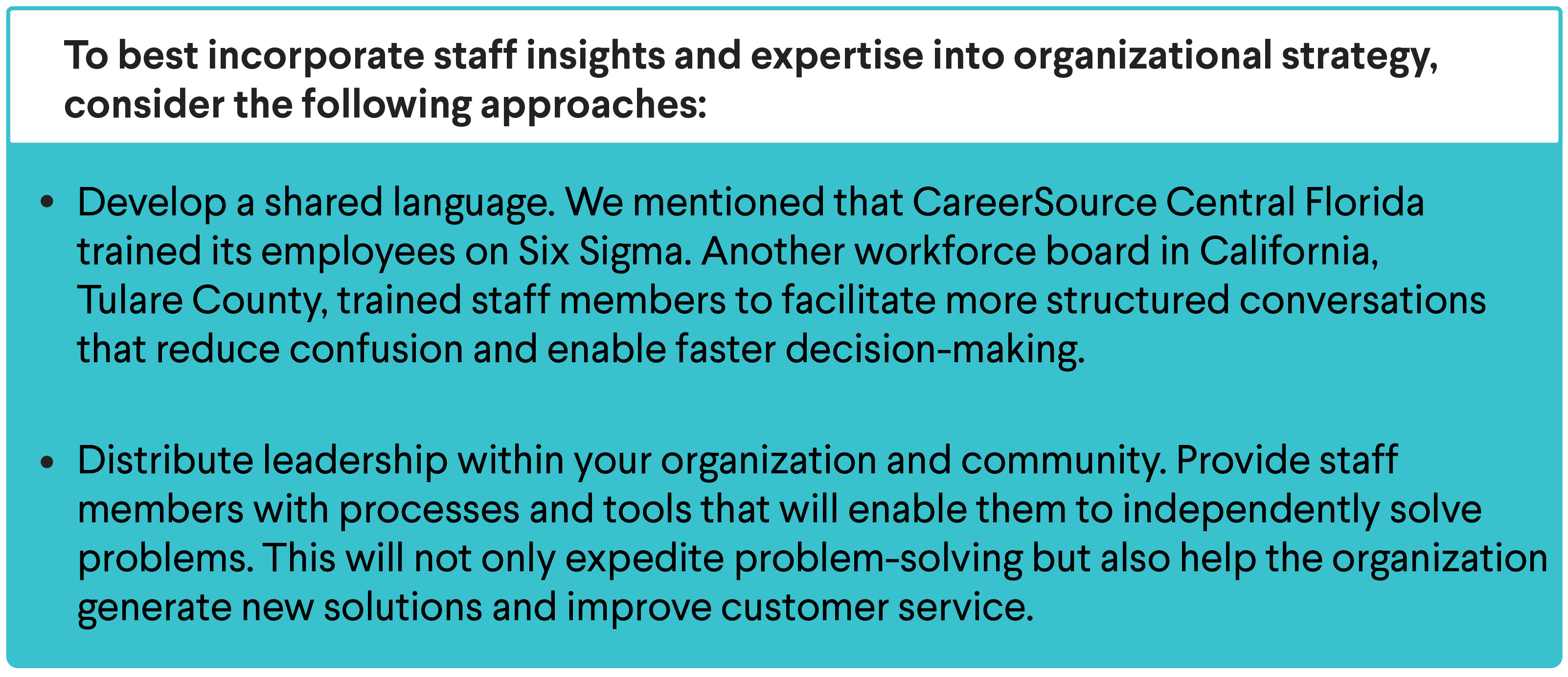
How Workforce Boards Can Take Action by Embracing Risk
April 4, 2023
At a Glance
By learning how to manage risk, future-focused workforce boards can better train and support workers, and connect them to high-quality employment.
The public workforce system is tasked with equipping America’s most vulnerable workers and learners with the skills and resources necessary to achieve economic self-sufficiency. It is a system that has traditionally been risk-averse, given that it is primarily funded by public dollars. However, achieving its mission now depends on local and regional workforce boards’ having the confidence to take risks and the resilience to withstand potential failure in the pursuit of more effective training and service delivery models.
Workforce boards are in the business of risk. They serve as workforce intermediaries that reduce risk for employers by convening groups of stakeholders that focus on creating a supply of skilled workers to support regional industry needs. Workforce boards also reduce financial risks for workers, ideally by connecting them to free or low-cost training for in-demand, high-quality jobs that contribute to economic mobility. Beyond their role as intermediaries, workforce boards can also reduce the risk of economic disruption across their communities by helping to diversify industry representation and improve the transferability of local workers’ skill sets.
Often, workforce boards are forced to adopt the risk profiles of their most influential and powerful stakeholders.
Within local and regional workforce areas, leaders are pushed and pulled by a set of stakeholders with different appetites for risk: Federal and state governments are heavily focused on compliance, whereas community-based organizations tend to take a “whatever means necessary” approach to achieving their missions. Often, workforce boards are forced to adopt the risk profiles of their most influential and powerful stakeholders. This can determine which organizations are risk-averse and which are risk-tolerant, which in turn has implications for their levels of innovation and impact.
Even though risk is an important part of a workforce board’s business model, many of them don’t understand how best to manage it. Future-focused workforce boards that take a transformational view of their role as risk managers tend to approach their mission of training, supporting, and connecting workers to high-quality employment opportunities more creatively.
Given that risk tolerance or aversion can drive the decisions of workforce system participants, we need to better understand how workforce boards are grappling with risk, whether implicitly or explicitly. Toward that end, we interviewed leaders within the public workforce system to understand how actual and perceived risk shapes organizational behavior across operations, strategy, services, culture, and partnerships and how workforce boards can adapt to or actively change the degree of risk their organization, customers, and communities experience.
Risk Assessment Will Set You Free
Some of the risks that workforce boards experience arise day-to-day, while others are incurred over a longer period of time. Traditional and measurable risks include cybersecurity, compliance, and financial health. There are also intangible risks, such as implementing policies or programs that are politically divisive or making decisions that could compromise the organization’s reputation or perceived trustworthiness. If these risks are not successfully anticipated and managed, it can result in real damage to an organization, its staff, and the people it serves. To mitigate organizational risks, workforce boards must first understand how to identify and assess them, the impacts of not effectively managing them, and options for mitigating or abating potential damage.
CareerSource Central Florida uses a framework and software tool called Failure Mode and Effects Analysis (FMEA) to categorize and prioritize risk by severity, occurrence rate, and detection on a scale of 1 to 10. For example, a risk that’s rated a 10 in severity is considered “catastrophic,” while a rating of 1 in occurrence is considered an “inevitable” risk. Benchmarks can be established based on current systems to determine acceptable risk levels. Of course, not all workforce boards will be able to maintain an entire enterprise risk management system. While such tools can help identify high-priority risks, it’s the process that goes into making those decisions and developing plans for mitigation that determines an organization’s resiliency.
Beyond using the FMEA tool, all staff members at CareerSource Central Florida are trained in the Six Sigma process improvement methodology and earn a Yellow or Green Belt certification. A board subcommittee meets regularly to update the framework, evaluate mitigation strategies, and reprioritize risks. A commitment to professional development along with opportunities for staff members to discuss and plan for risk imbues a risk management mindset throughout the entire organization and gets everyone speaking the same language, from frontline staff members to the board chair.

Experimenting Early and Often Reduces Risk Long Term
In addition to consulting private-sector partners, workforce boards must design programs and services in partnership with workers and learners. Why is this important? We have a moral obligation to incorporate worker voice into systems that impact them, but beyond that, a human-centered approach reduces the risk of leaping to scale without understanding the repercussions.
Launching a new product or program without knowing how your customers will react to it presents a variety of risks. Yet, because of legitimate time constraints or a tendency to maintain the status quo, many workforce boards are forced to fast-forward to launching programs without ever having consulted their customers. It takes time to properly incorporate workers’ and learners’ voices. It takes more time to engage in an iterative process of co-creation with workers and learners, but consider the time (and money) wasted by putting a final product or program into the world that fails to meet the needs of your community.

Flattening Hierarchies Improves Insights
Boards can decrease organizational risks by giving frontline staff members more autonomy. Frontline staffers who work with customers through workforce boards and American Job Centers are often the furthest removed from making the kinds of decisions that affect the direction of an organization. A structure in which leadership is disconnected from the reality of the people coming through the organization’s doors can create an information disconnect. This can result in misalignments between staff and leadership’s ideas about how best to meet the needs of customers and the community, which ultimately influences how effective the organization is in carrying out its mission.

Control What You Can; Partner Where You Can’t
Workforce boards are most effective at controlling for risks when those risks are directly associated with core activities such as training and employment services. There are a variety of factors within a person’s environment that can affect their ability to successfully obtain and thrive in a job, including the availability and affordability of housing, transportation, child care, nutrition, and mental health care. While many workforce boards do seek to address these issues, their reach is often limited to current customers and doesn’t allow them to address the root causes at the broader community level. This is where partnerships can come into play.
The Spokane Workforce Council is a great example of distributing risk through partnership-building. The council has experienced the operational and financial benefits of physically bringing its partners together through a campus model. It rents office space to social service agencies with whom it partners to provide services to its customers. This not only helps the council streamline service delivery but also enables it to distribute customer risk across many organizations. It has established a headquarters to enable a variety of community-based organizations to provide critical services to participants. All organizations that call the campus home coordinate regularly on grants, communication, data collection, and service provision, continually aligning their actions and deepening their collective impact.
Workforce Communities of Action
The Workforce Transformation team at JFF is launching a new opportunity, Workforce Communities of Action. This experience will support workforce boards in identifying and planning for the risks associated with innovation through a focused and structured process of problem and solution exploration. Led by JFF and our design partner, CivicMakers, and supported by a team of advisors, participating organizations will engage in a collaborative effort to identify potential solutions to problems around technology integration, data use and maturity, human-centered design, and risk tolerance. A select number of workforce boards will also be identified to receive $10,000 and will continue working closely with JFF and our team of advisors to develop a viable proposal to support implementation.
To learn more about Workforce Communities of Action, including how to apply, visit our landing page.
Thank you to Kristy Fairfax, KMF Consulting; Andy Hall, Trailhead Strategies Inc.; Kristin Harrington, Lead Star; Virginia Hamilton, Make Fast Studio; Steven Nguyen, CareerSource Central Florida; Laurie Bouillion Larrea, Workforce Solutions Greater Dallas; and Dawn Karber, Spokane Workforce Council.
Related Content

JFF’s Workforce Communities of Action: Transforming Ideas Into Action
JFF’s Workforce and Regional Economies Practice Consultancy: Bring your knowledge and experience to JFF and our partners! Introduction Across the country, local economies are feeling the impacts of supply chain shortages, inflation, labor market fluctuations,…
